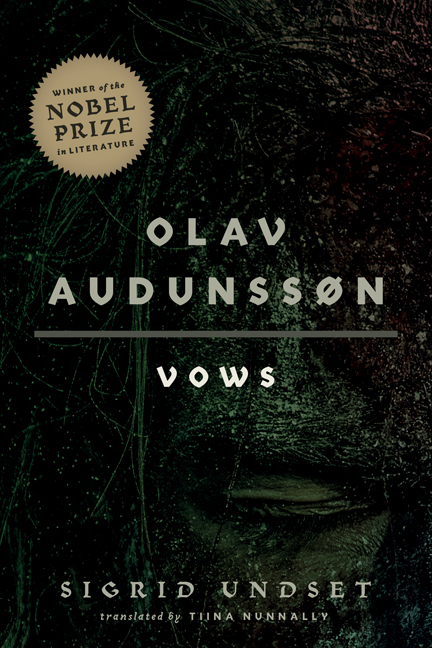What do you think?
Rate this book


336 pages, Paperback
First published January 1, 1925
“It’s easy to be a good Christian, Olav, as long as God makes no more demands upon you than inviting you to church to listen to beautiful songs and asking you to obey Him while He pats you with His fatherly hand. But a man’s faith can be tested on the day when God does not want the same thing he wants. Let me tell you what Bishop Torfinn said the other day when we were speaking of your case. ‘May God grant,’ he said, ‘that the boy learns to understand over time that for a man who insists on doing what he wants to do, there will soon come a day when he sees he has done what he never intended to do.’”
That was how things stood for Olav Audunssøn, that was his fate; he would be with Ingunn forever. That was the only certainty in his life. He and Ingunn were inextricably bound to one another. He seldom thought of that evening when he and Ingunn were promised to each other, and it had been many years since anyone had mentioned the betrothal of the two children. Yet underlying everything he felt and thought, it was there like solid ground beneath his feet: the fact that he would always live with Ingunn. The boy had no kinsmen he might turn to. No doubt he knew that Hestviken was now his property, but with every passing year his images of the estate became less and less clear. They were like bits and pieces of a dream he recalled. If he imagined that one day he would return to live there, he found it comforting and right that he would take Ingunn with him. The two of them would face the unknown future together.
Shivering with cold, she realized that she was nothing more than a defenseless, abandoned, and fatherless child, neither maiden nor wife, and not a single friend did she have who would uphold her right. Olav had disappeared and no one knew where he was; the bishop was gone; Arnvid was far away, and she was unable to send word to him. There was no one to whom she could turn except her old paternal grandmother, who had now retreated into childhood, if her ruthless kinsmen should decide to take their revenge on her. A small, quivering, and trembling thing, she curled herself around the only scrap of determination within her weak and instinct-driven soul: she would steadfastly trust in Olav and remain faithful to him, even if, because of him, they should torture the very life out of her.
"Great clouds drifted across the sky, throwing shadows that turned the forests dark blue—the patches of green meadow and white cornfield showed up so strongly between. And the fiord was grey with smooth dark currents farther out, which reflected scraps of the autumnal land. Now and again the sun came out, and its sharp, golden light baked them—but the next moment a cloud came by and the warmth was gone—and the ground was bleak."
The soil was almost bare here in the grove, brown and bleak, but the sun on the rocks was warm—fair-weather clouds drifted high up in the silky blue sky. But the bay, of which she could see a glimpse between the naked white birch-trunks, was still covered with rotten, thawing ice, and on the far shore the snow still glared white among the woods, right down to the beach. Here on the sunny side there was a trickling and gurgling of water everywhere, but the thaw had not yet given its full roar to the voice of spring.